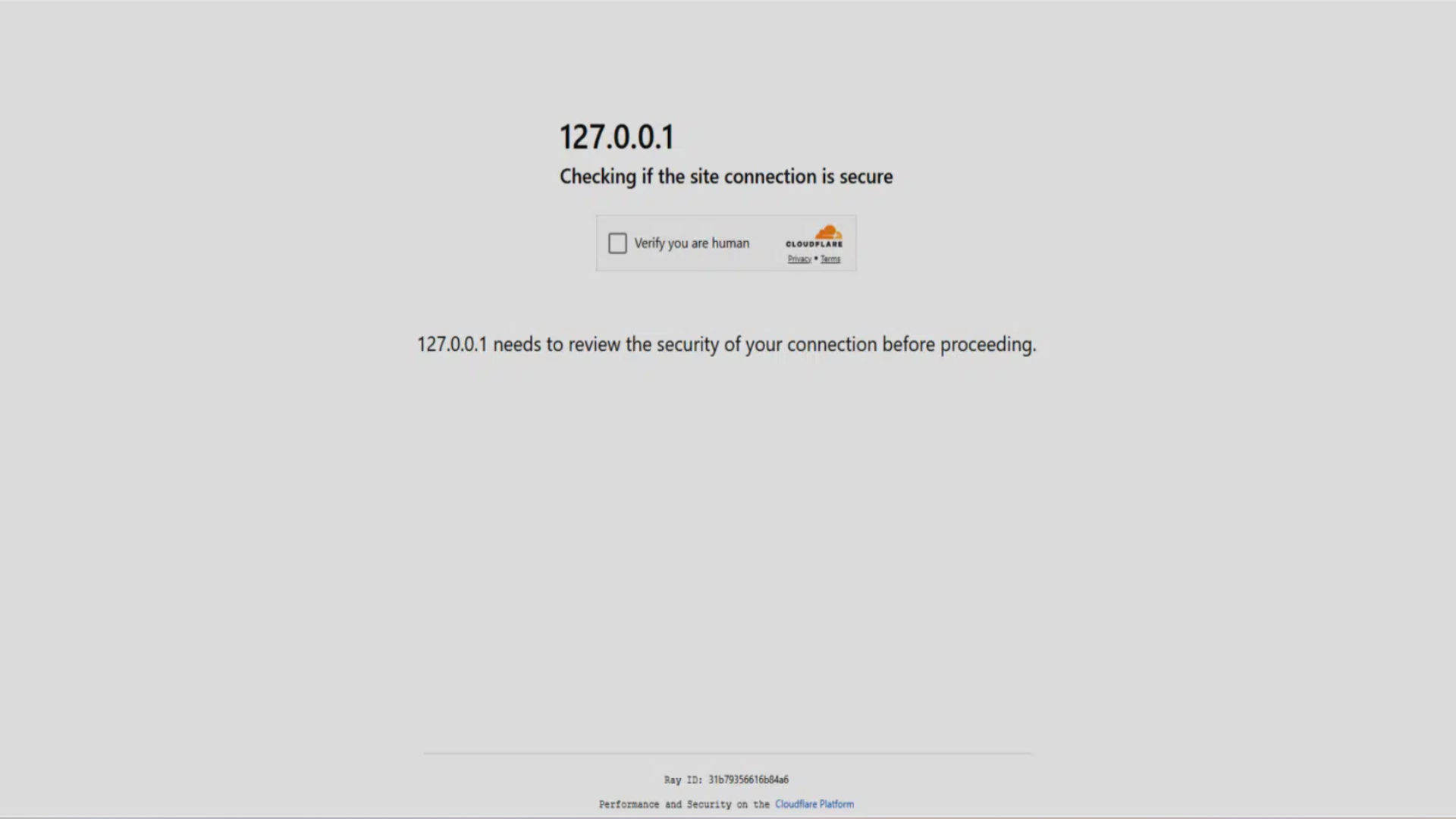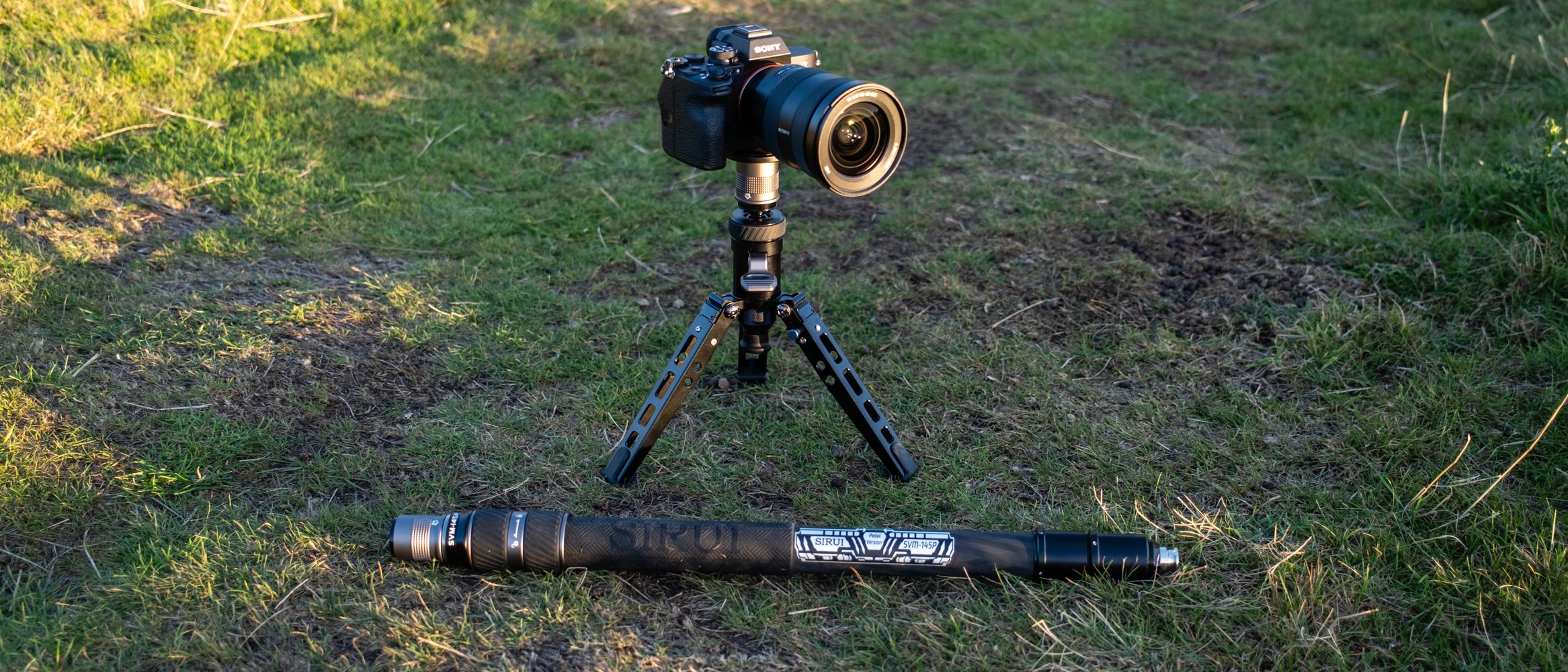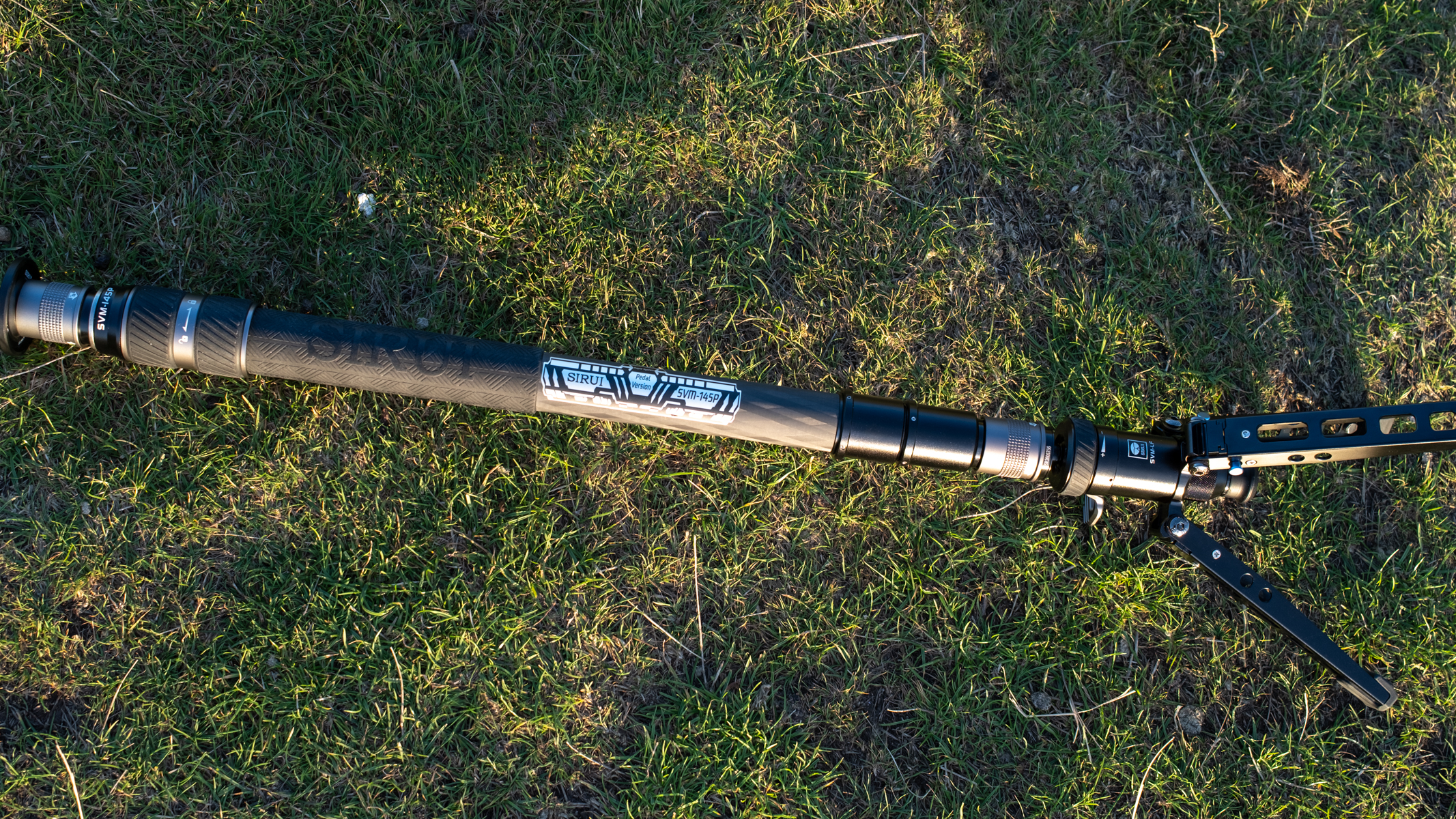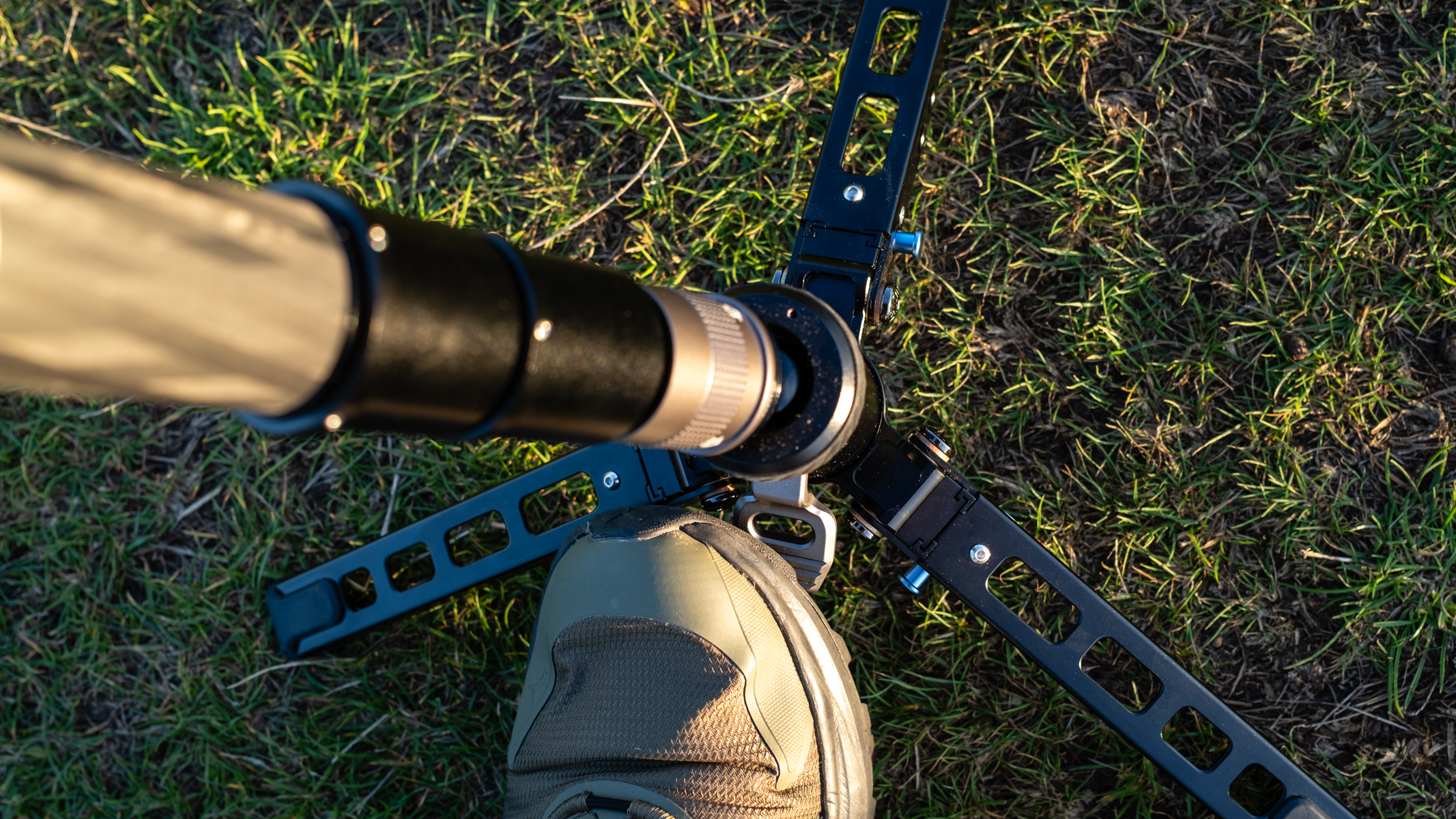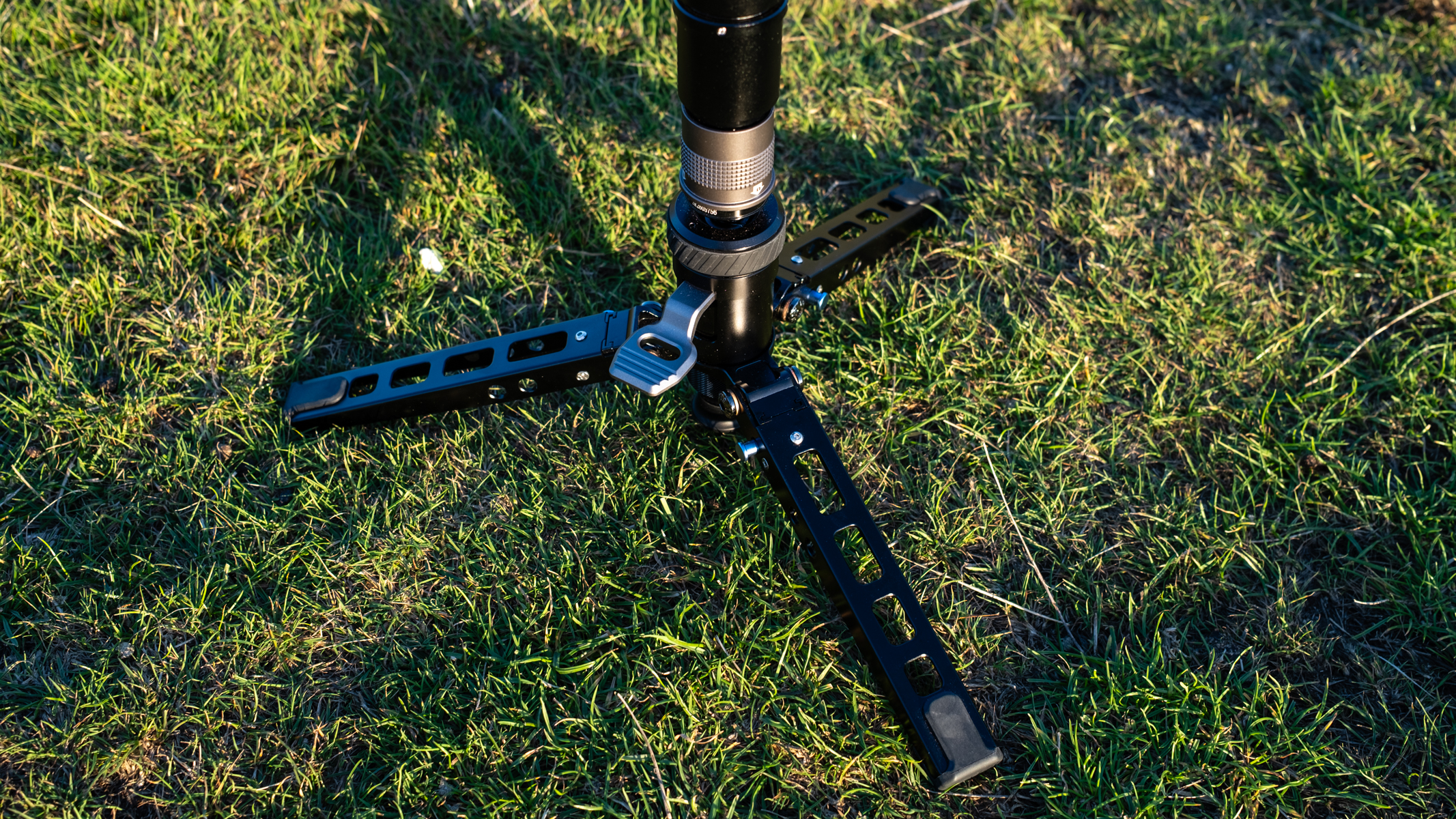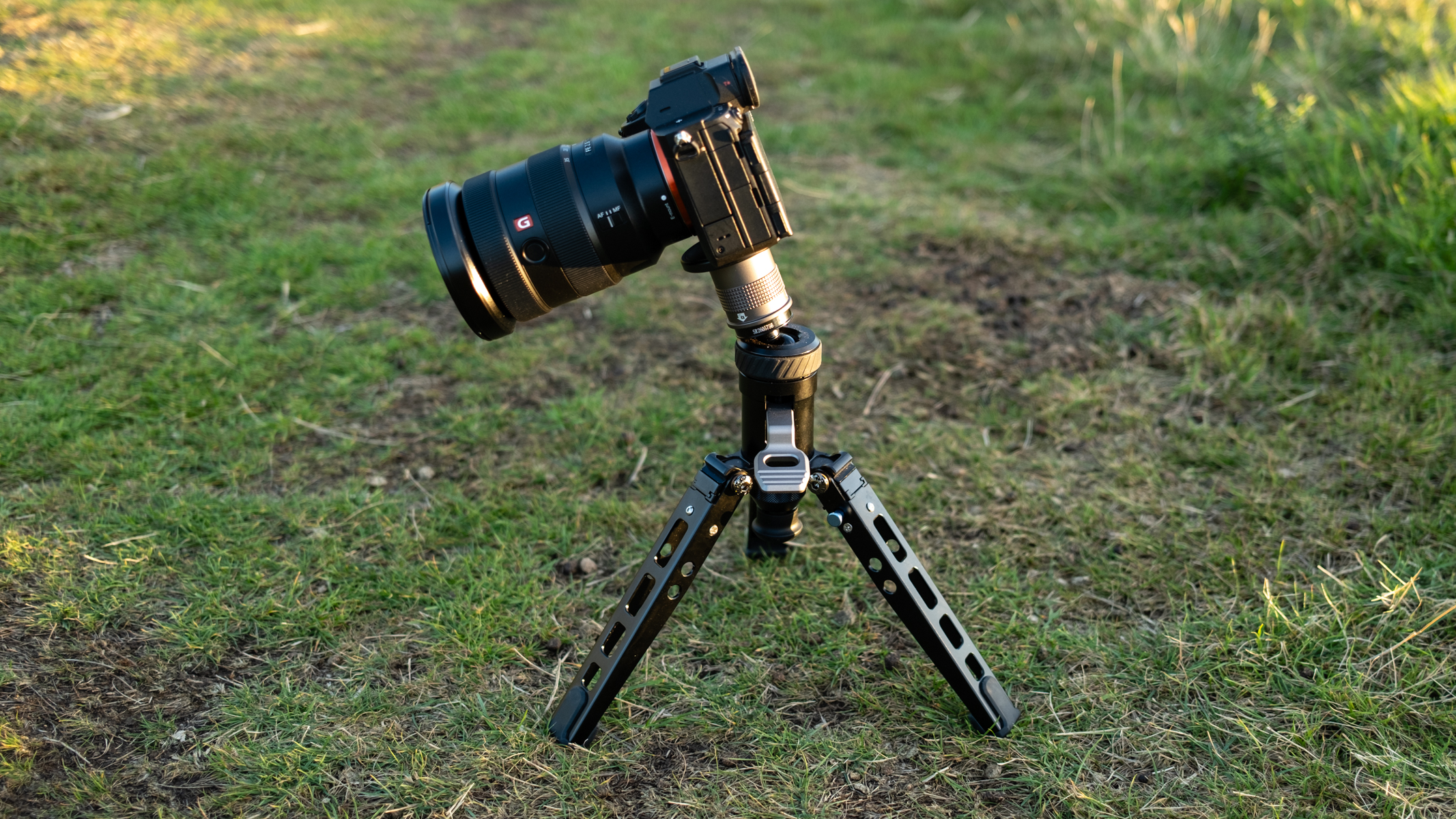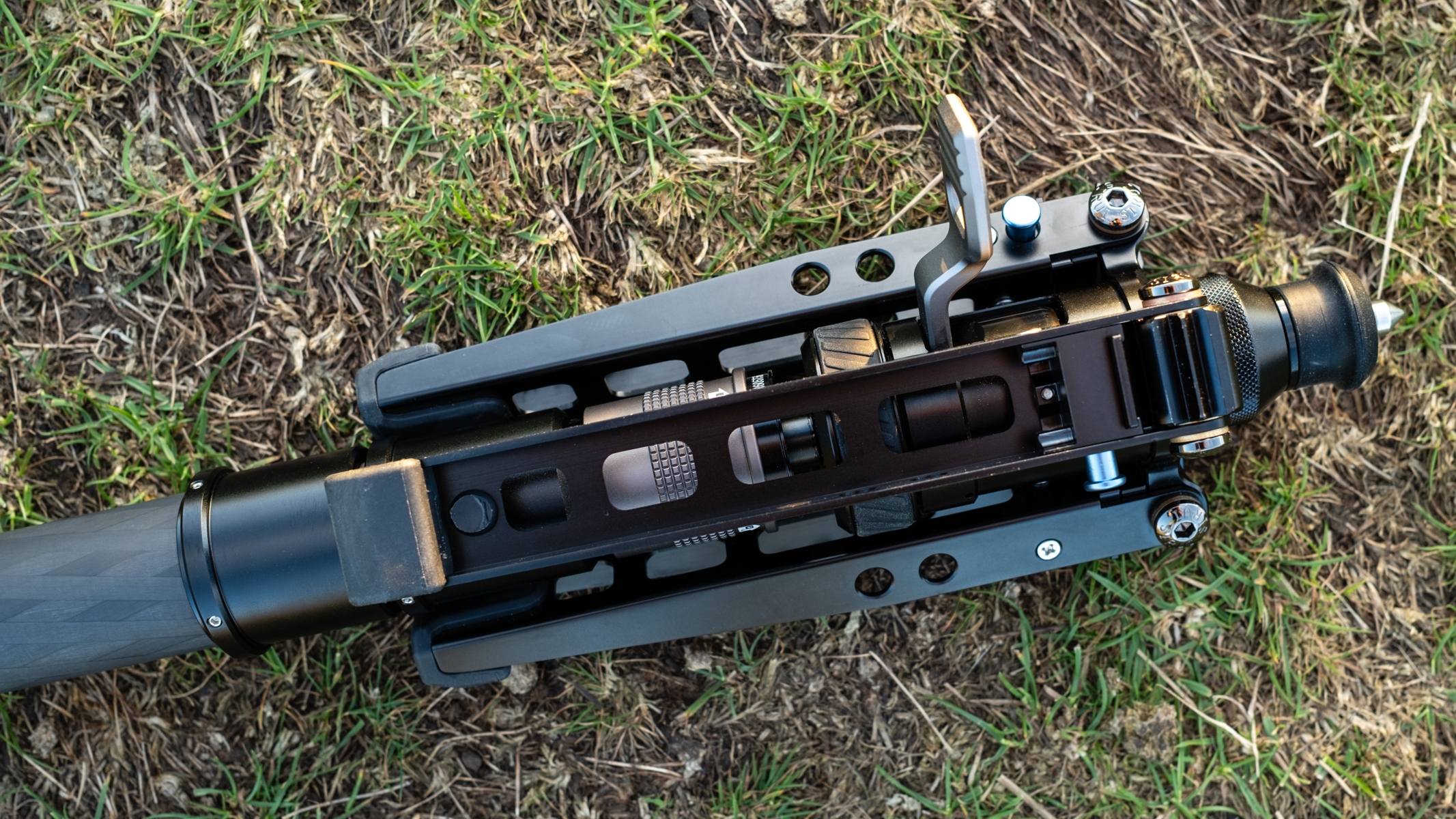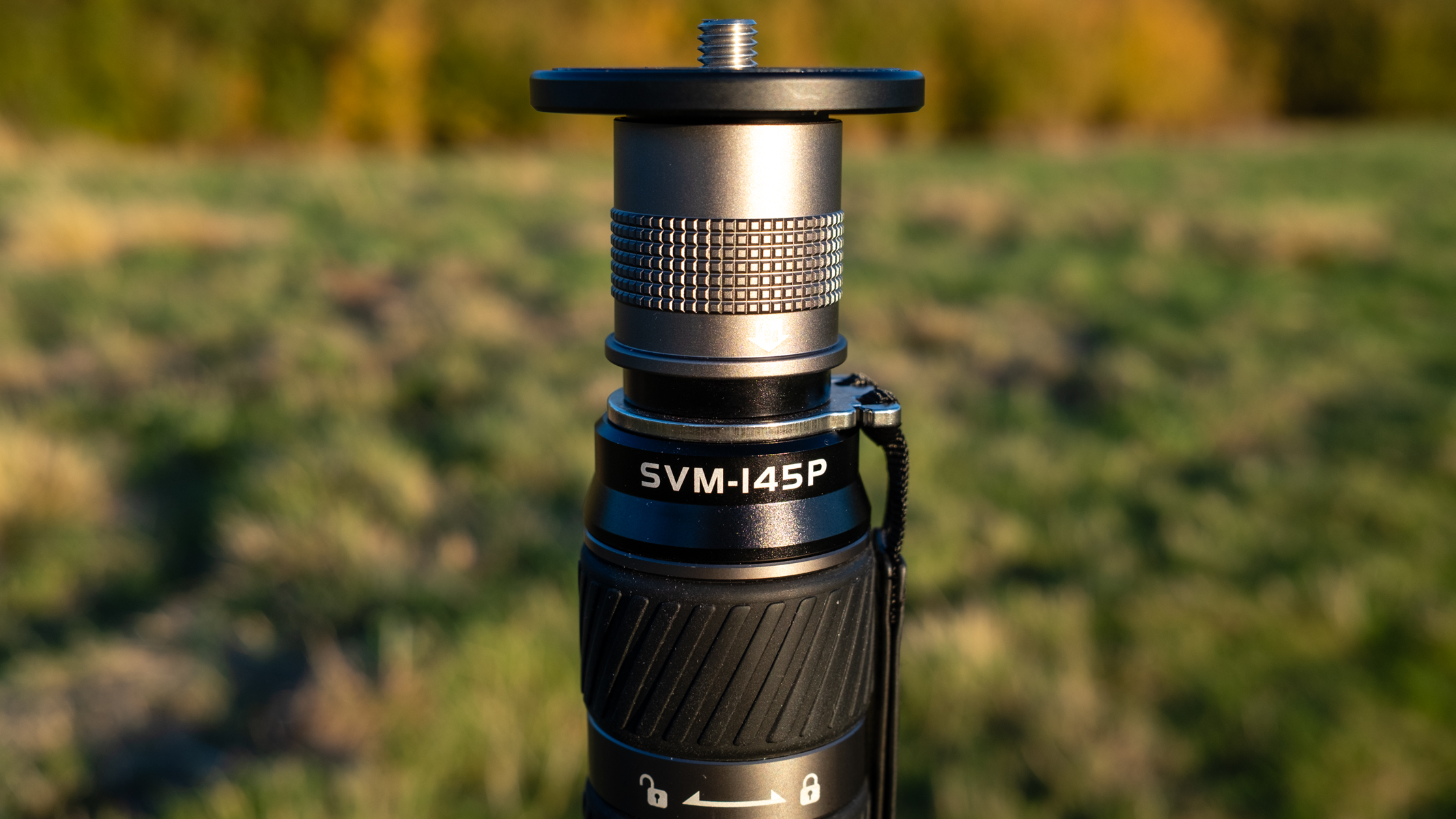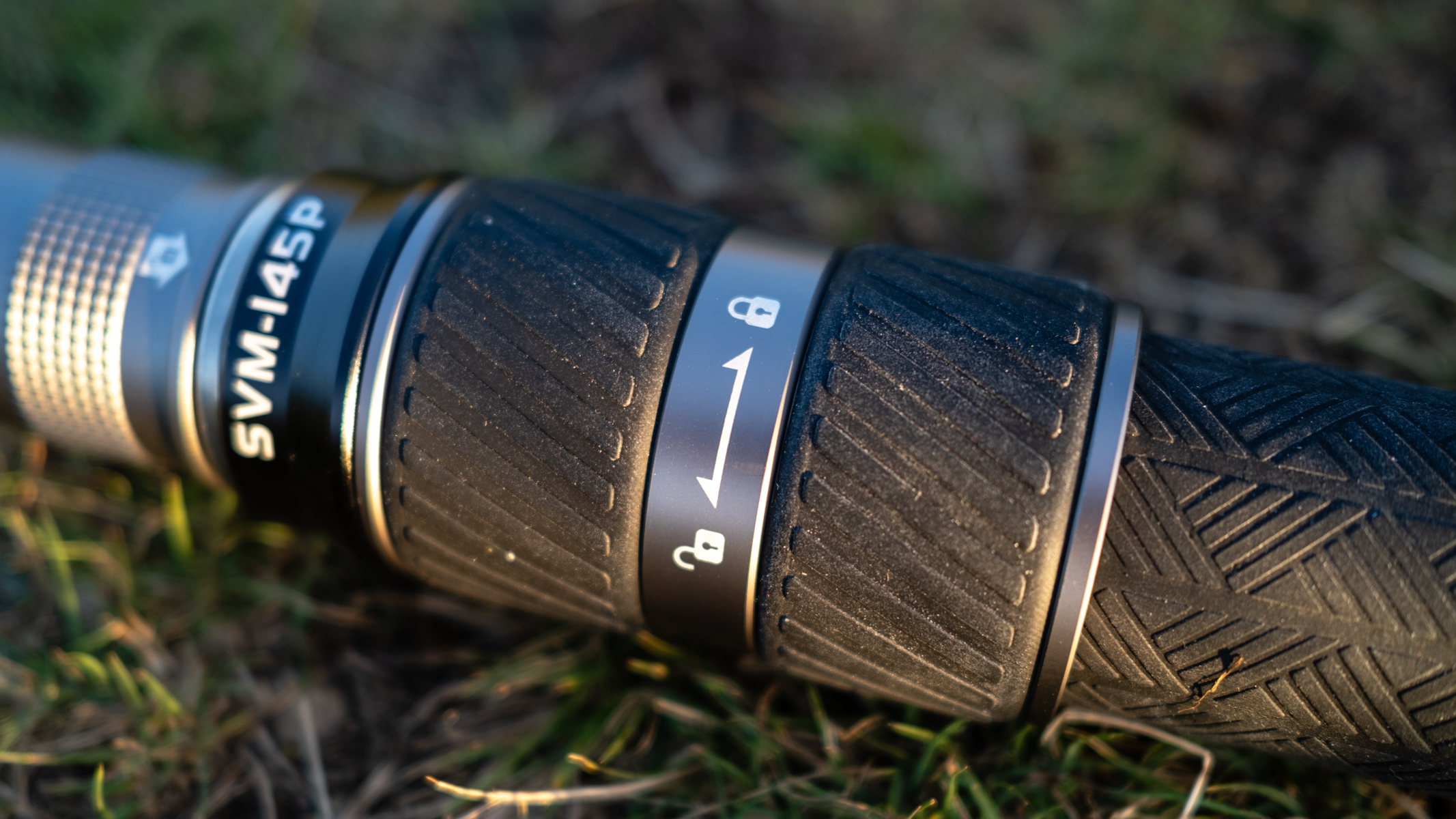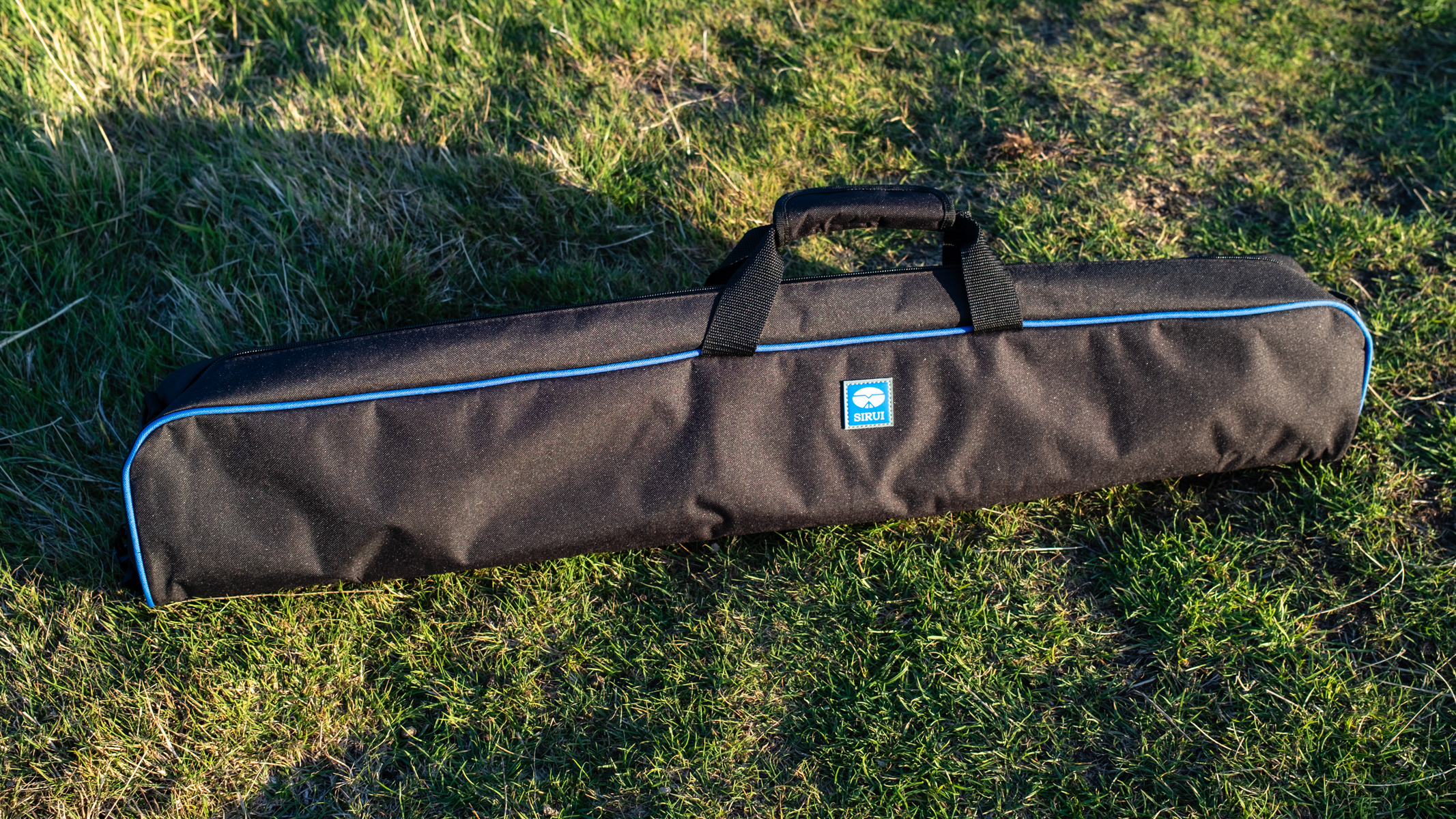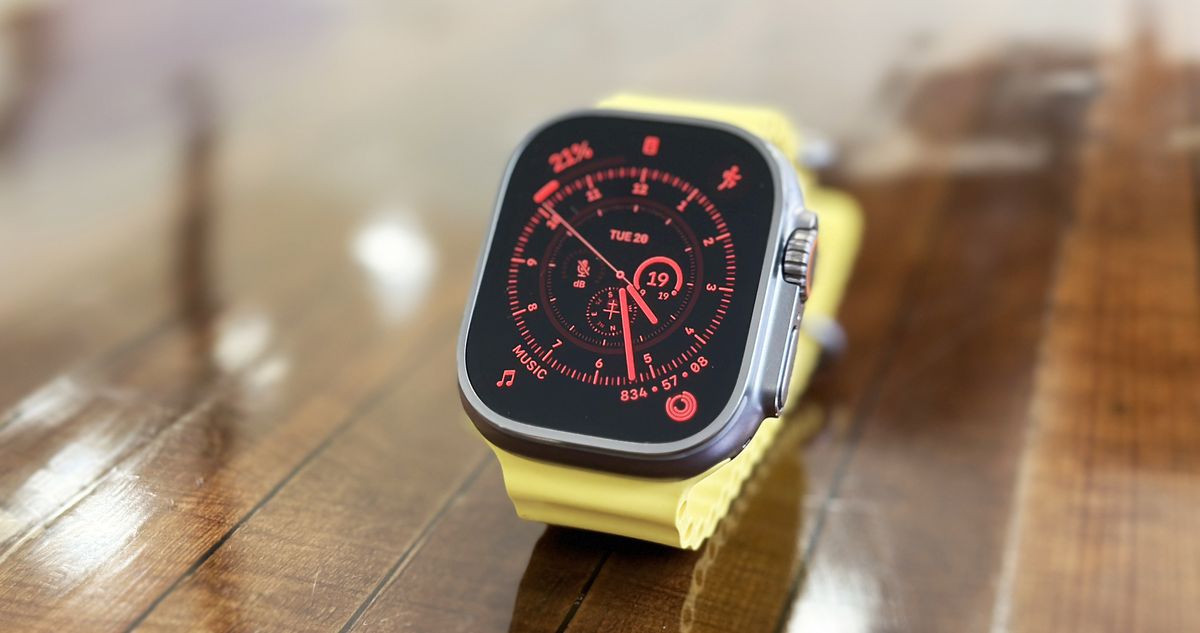Why you can trust TechRadar
We spend hours testing every product or service we review, so you can be sure you’re buying the best. Find out more about how we test.
Sirui SVM-145P: two-minute review
Monopods are useful camera supports in a range of situations, and many tripods come with a detachable leg that can be converted into a monopod, a system that works extremely well. With this in mind, you might wonder why you’d need to buy a dedicated monopod. In a nutshell, the answer is that monopods like the Sirui SVM-145P bring something much more versatile and robust to the table.
As the name suggests, this is a monopod with a maximum height of 145cm, or 57.1 inches, while the P signifies ‘pedal’. The pedal is used to quickly release the lock at the bottom of the monopod to allow for 20 degrees of tilt and 360 degrees of rotation, providing the movement you need when the three metal feet are being used for stability.
An interesting feature is that there’s a friction control, which allows you to control how loose or restricted these two movements are. This is useful when shooting video because it allows for smoother pans and tilts.
You can, of course, attach a fluid tripod head for video and use this for panning rather than the monopod itself. My only criticism of the friction control is that the dial at the top of the feet section is itself stiff to turn. Stiff is good to avoid movements caused by accidental knocks, but it’s arguably too stiff.
You can, of course, keep the feet folded up, in which configuration the SVM-145P performs like a standard monopod with a rubber foot at the bottom that can also be rotated to reveal a spike. The feet can also be removed from the monopod, which reduces size and weight when you require only basic functionality.
Moving on to the minimum height of the SVM-145P, the minimum in monopod mode is 77cm / 30.3 inches, which isn’t particularly low. The SVM-145P, however, has another trick up its sleeve: quick-release feet and the mounting plate where a tripod head can be attached.
These can then be put together to create a desktop / mini tripod, which is roughly 20cm / 7.87 inches. The mounting plate also features a 1/4-inch or 3/8-inch self-adaptive thread to allow tripod heads with either thread size to be attached.
The desktop tripod’s minimum height isn’t listed in the specs, only the minimum heights of the basic monopod and monopod-plus-feet configuration. Adding a tripod head to the feet with the base attached will inevitably increase the minimum height, but it remains low to the ground, or not too high when positioned on a desk or table. There’s no denying that it’s a useful and interesting feature for a monopod.
Operation of the SVM-145P is quick and easy, with a simple twist lock at the top for extending and retracting the monopod. Plus, there’s the quick-release mounting plate for switching between monopod and desktop modes.
The aim of this design is speed of operation, and it certainly achieves this. The ability to move the SVM-145P quickly and to easily set it up in seconds also makes it suitable for fast-paced shooting situations. It’s undoubtedly much quicker to set up than a tripod, for instance.
As far as monopods go, this one is pretty chunky, with the thickest tube having a 36mm / 1.42-inch diameter. The weight of the SVM-145P without a head is 1.49kg / 3.3lbs, so once a head is attached, it’s going to weigh as much as many travel tripods.
When you remove the metal feet, the overall weight is reduced by 720g / 1.6lbs. The maximum payload of the monopod is 10kg / 22lbs, which will include the tripod head if you attach one, but leaves plenty of room for many camera and lens combinations.
The SVM-145P doesn’t come with a head included. This frees you to choose your own head, as well as providing the ability to use different heads depending on what and how you’re shooting. This is standard in the world of mid-to-higher-end tripods and monopods, but more and more travel tripods come with a ball head included, which does reduce overall cost.
My biggest issues with the SVM-145P are that it weighs as much as some travel tripods that have multi-functionality, including monopod and desktop tripod modes, and the cost. The build quality and functionality are fantastic for a monopod, but it also costs the same as many travel tripods, which also come with a head included.
Sirui SVM-145P: key specs
|
Head |
Purchased separately |
|
Leg sections |
Three |
|
Height |
770mm – 1450mm / 30.3 inches – 57.1 inches |
|
Weight |
1.53kg / 3.4lbs |
|
Max Payload |
10kg / 22.04lbs |
|
Material |
Carbon fiber |
Sirui SVM-145P: Price and availability
The Sirui SVM-145P is available now and costs $274 / £239, which puts it in a similar price range to many travel tripods, and the SVM-145P doesn’t even include a tripod head. You can use the monopod without a head, which is ideal when using it to support larger telephoto lenses, but for general photo and video capture a tripod head does improve handling and control.
With this in mind, the SVM-145P is quite expensive. On the other hand, it’s much more feature-packed than a basic monopod or one that’s just a converted tripod leg. If you’re looking for a high-quality monopod and will get plenty of use from it, this could be a fantastic option to consider. If, however, you only need to use a monopod occasionally, you might be better off with a cheaper alternative.
There are also several other monopods available in the SVM range, with different heights, with and without the foot pedal that allows you to switch between a locked monopod and pan and tilt movements when the feet are in use. This means you can choose the height and functionality that works best for you, but as the model that loosely sits in the middle, the SVM-145P is likely to be one of the more popular options in the range.
Sirui SVM-145P: Also consider
Should I buy the Sirui SVM-145P?

Buy it if…
Don’t buy it if…
How I tested the Sirui SVM-145P
- I tested it in all configurations
- I used it with different camera and lens combinations
- I tested it with and without a tripod head
I tested the Sirui SVM-145P for more than a week in situations when a monopod is the most appropriate solution, using it to capture both a range of photographic subjects and video. I also tested it alongside a travel tripod, so that I could directly compare the pros and cons of each system.
First reviewed October 2025





